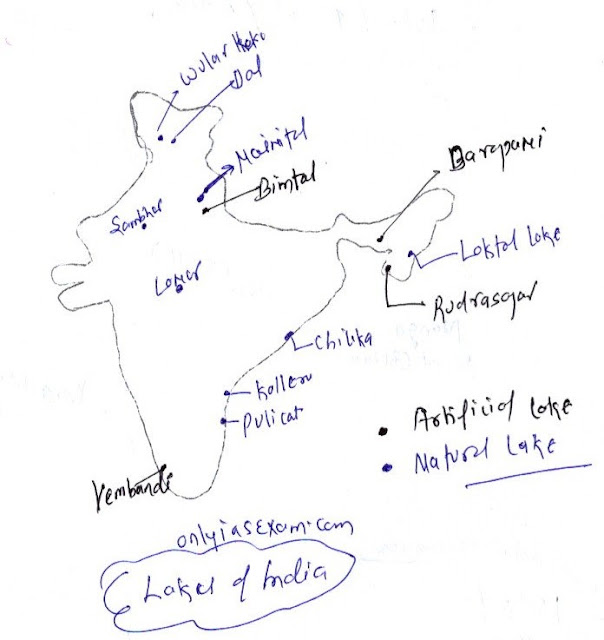Question.
Make a list of natural and artificial lakes with the help of the atlas.
( Chapter - 3 Drainage, Cass 9 NCERT Contemporary India -I )
Answer.
Natural lakes:
Natural lakes are those lakes that are formed by natural processes without the help of humans. Natural lakes are generally formed in hilly areas and rift zone.
The followings are the list of major natural lakes in India:
- Wular lake
- Dal lake
- Nainital lake
- Loktak Lake
- Chilika Lake
- Sambhar Lake
- Pulicat Lake
- Kolleru Lake
- Lonar lake
Wular lake is the largest freshwater lake in India. It was formed by tectonic action and it is in Jammu and Kashmir.
Dal lake is a freshwater lake located in Srinagar.
Nainital lake is a natural freshwater lake located in Nainital, Uttarakhand.
Loktak is a natural lake located in Manipur. It is the largest freshwater lake in Manipur.
Chilika lake is the largest brackish lake in India and it is a natural lake located on the Odisha coast near the Mahanadi delta.
Sambhar lake is the largest salt lake in India, it is a natural lake located in Rajasthan, Jaipur district.
Pulicat lake is the second largest brackish lake in India after Chilika lake. It is located on the boundary of the Andhra and Tamil Nadu coasts.
Kolleru Lake is a natural lake, it is located between the Krisha and Godavari delta.
Artificial lakes:
Artificial lakes are those lakes that are built with the help of humans. The following are artificial lakes of India:
- Bhimtal Lake
- Barapani
- Vembanad lake
- Rudrasagar lake
Bhimtal lake is an artificial lake built in 1883, it is in Nainital city.
Barapani is also known as Umiam, it is an artificial lake which is located near Shillong.
Vembanad lake is an artificial lake that is located in Kerala. It is the largest freshwater lake in Kerala and the longest lake in India.
Rudrasagar lake is an artificial lake and also a Ramsar site that is located in Tripura.
You may like also:

ConversionConversion EmoticonEmoticon